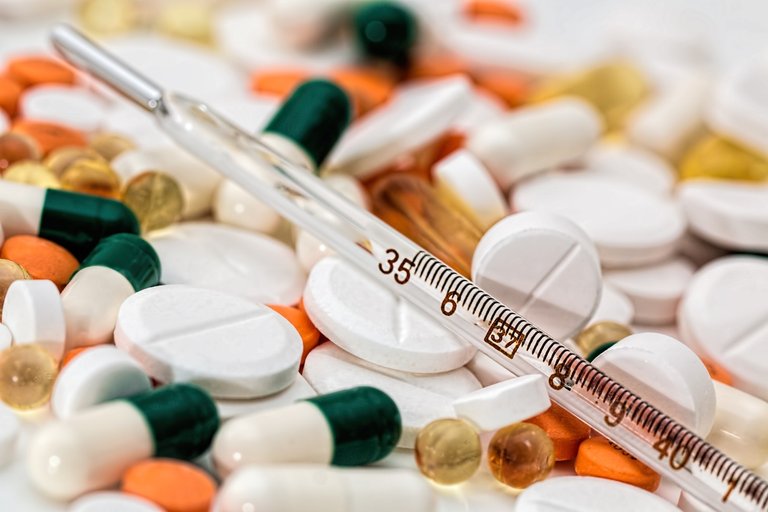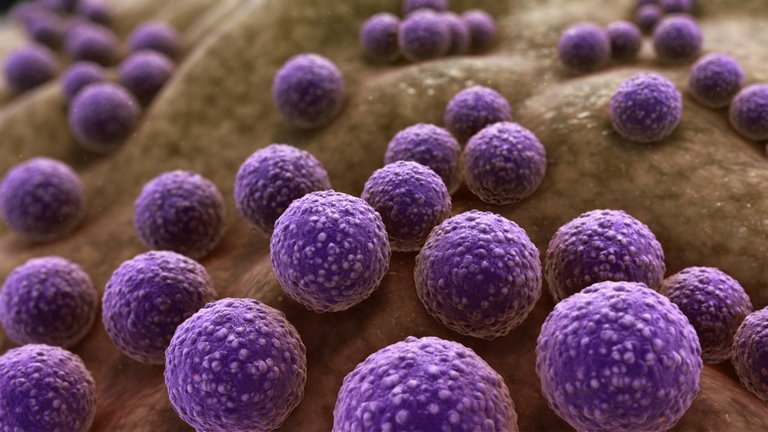Drugs and it's advancement

Drugs
Source:Px here.
Before the introduction of medicinal drugs, herbalists have depended extensively on plants to produce them with drugs for treatments.
Not until Alexander Fleming (1881-1955) discovered penicillin in 1928 from his research at St. Mary hospital in London.
Although he had learned about these drugs about seven years before the utilization of salfanilamide, because of lack of confidence he could not carry out his test on humans.
According to documentation, we understood that flaming in late 1928 was observing a different strain of staphylococcus bacteria in which she prepared on some cultured agar plate before he went on a vacation after 4 weeks.
Returning to his laboratory, he acknowledged that one of the plates used for his experiments had been contaminated by a mould fungus. Again, he was astonished to realize that around the margin of the mould, there was no sign of bacteria growing on it.
This made flaming suggest a temporal theory that the bacteria could not attack the mould colony possibly because the mould colony was too concentrated and can destroy the bacteria.
He named the mould as Penicillium notatum and the supposed antibiotic substance, he called penicillin.
He, later on, made another experiment with the penicillium on a liquid meat broth medium which he finalized that the broth contained penicillin which surpassed the growth of a wide range of bacteria.
But it was painful to say that even with the great contribution Fleming rendered to the development of drugs, he eventually lost interest in the way because he assumed that penicillin would not be easy to extract and too unstable to add any medical value to life.
After many years, two scientists afterward, Lorey and Ernest Chain from the Oxford University, succeeded in developing pure and stable penicillin which is in use up-to-date.
Now readers let's move further to the key definition of drugs.
WHAT IS DRUGS
Any chemical substance injected into the body and can affect changes or reactions in the body whether taken legally or illegally is known as a drug.
Drugs are prescribed legally when symptoms like headache (or for treatments of viral or bacterial infections) is wished to be alleviated from the sufferer.
However, drugs may also be taken without the assistance of an expert to satisfy desires probably to induce one to sleep or create hallucination.
Today many products like tea coffee and energy-boosting drinks (caffeine) such as tobacco (nicotine); and alcoholic drinks(alcohol) contain drugs.
Drugs are generated based on the idea of not eliciting any harmful effects to tissues of the Host but can kill pathogens inhabiting the Host. This was what made penicillin work out as an antibiotic because it eradicates bacterial infections without giving much havoc to the body.
Bacteria are harmful pathogenic organisms and it is surprising to comprehend that most of the antibiotics we employ for treatment today are emanated from bacteria or fungi that reside in the soil.
To date, the essence of the antibiotic in bacteria is yet to be fully understood.
Naturally, a major concentration of antibiotics is derived from filamentous microscopic bacteria known as Actinomycetes. They produced the streptomycin antibiotic.
Chemists have recognized penicillin as a favorable antibiotic. Although it is synthesized through the mutant form of a different penicillium species according to flaming accounts, yet it is one of the essential antibiotics understood so far.
The mutation of penicillin resources the production of different types of penicillin and they can be improved in the laboratory to suit any aspect of disease treatment.
Ampicillin, methicillin, and oxacillin iron other forms of penicillin.
There are many procedures by which bacteria are being attacked by the antibiotics inside the Host. One of these ways is the interference in the advancement of bacterial cell walls and so deter the bacteria from propagating. Some disrupt the protein synthesis and then attack the bacteria handily.
A cell wall is not found in animal cells, thus making the cell structure involved in the production of protein different. Hence animal cells are not eroded by antibiotics but can evoke an unusual situation as allergic reactions arise.
Research has substantiated that antibiotics cannot destroy all the known bacteria. This is true evidence since some certain bacteria maintain the ability to cultivate chemicals that can resist this antibiotic by mutation process.
For this fact, it is approved to use a highly concentrated antibiotic, making use of the diluted form of antibiotic can end up formulating a resistant population of bacteria. And harmless bacteria when intruded by the drug-resistant bacteria are diversified into pathogens.
It is plausible to understand that antibiotics do not influence any transition in the treatment of diseases caused by viruses. The justification behind this fact is not far-fetched as antibiotics are well recognized to disrupt bacterial components such as the cell walls and membranes. They are engaged also in the interference of DNA replication and synthesis of protein in bacteria. Unlike viruses which have different body components that cannot be affected by antibiotics.
Possibly, you have heard or read about resistant bacteria before. Of course, they cannot be destroyed or killed by antibiotic duty mutation they undergo when exposed to infection from open wounds or cuts on the body since they live freely on the skin.
When they're exposed to drugs, the survivors may be drug-resistant mutants. Whenever they undergo reproduction, all their offsprings will give birth to the drug resistance, hence the antibiotic will become less effective on them.
One of the lasting resistant bacteria that scientists have known so far is the methicillin-resistant staphylococcus aureus(MRSA).

Source: Alamy
Conceptual computer illustration of MRSA bacteria being cultured in a Petri dish. Methicillin-resistant Staphylococcus aureus (MRSA) is a bacterium responsible for several difficult-to-treat infections in humans
Widely used antibiotics become inactive when confronted by this type of bacteria. They prepare themselves so that they will be difficult to treat.
Naturally, the staphylococcus aureus inhabits freely on the skin, the nose, and the throat. Evoking occasional mild infections.

Staphylococcus Bacteria
Source: Wikipedia, author: www.scientificanimations.com.
At times, when there is a cut on the skin, it develops into a more harmful bacteria if allowed to infect the internal organs. Such a situation can be provoked during operations in a hospital with an infection.
In conclusion, it is quite unfortunate that people today now prescribe drugs for themselves without the concern of an expert. The misuse of advocate drugs like depressants is now common in society, thus causing a terrible effect on the unfortunate addicts.
Reference
• Cambridge IGCSE BIOLOGY, ISBN 978-1-4441-7646-9.
•Discovery and Development of Penicillin.
•Drugs
https://twitter.com/Jsalvage2/status/1363827860956454917
Thanks for your contribution to the STEMsocial community. Feel free to join us on discord to get to know the rest of us!
Please consider supporting our funding proposal, approving our witness (@stem.witness) or delegating to the @stemsocial account (for some ROI).
Please consider using the STEMsocial app app and including @stemsocial as a beneficiary to get a stronger support.
Dear @jsalvage , It's surprising that we can make antibiotics from harmful bacteria.
I remember that bacteria were inanimate in the ground and turned into living things when they get inside living things.
Just as bacteria live in the ground, I think humans were the first to emerge from the ground, as the Bible says. Are humans created out of bacteria?😄
By the way, what is the difference between bacteria and viruses?
Hahaha, well, to start with, the Bible made it clear that animals were first created before the human was made to take care of them. Again, he was made from the dust of the earth and not from bacteria although bacteria are living under the ground already 😃. But that doesn't mean that God developed man from this microorganism.
(From my perspective)
The presence of bacteria is amazing. I don't know how evolutionists who reject creationism will interpret the existence of bacteria.
From an evolutionary point of view, bacteria are less evolved than humans, but they are a paradox in the fact that they have superior abilities than humans.
The fact that bacteria dominate human survival cannot be explained by evolutionary theory.
When humans die, they are buried in the ground and bacteria break down the human body. I guessed it was probably the creation of the human body from bacteria in the ground. Bacteria are countless like dust on the ground.
Virus possesses distant characteristics from bacteria. The virus has a different DNA, unlike bacteria. And the virus can be living or not living depending on the environment it finds itself in while bacteria is always a living organism.
Oh, so are viruses more harmful to humans than bacteria? Does it mean that a virus is inanimate outside of an organism, and turns into an organism when it enters into an organism?
Yes, they become living organism when found in a living tissue.
Posted using Dapplr